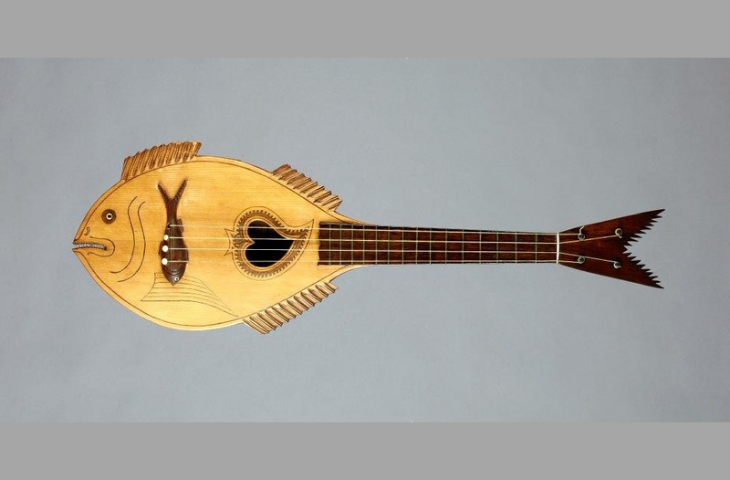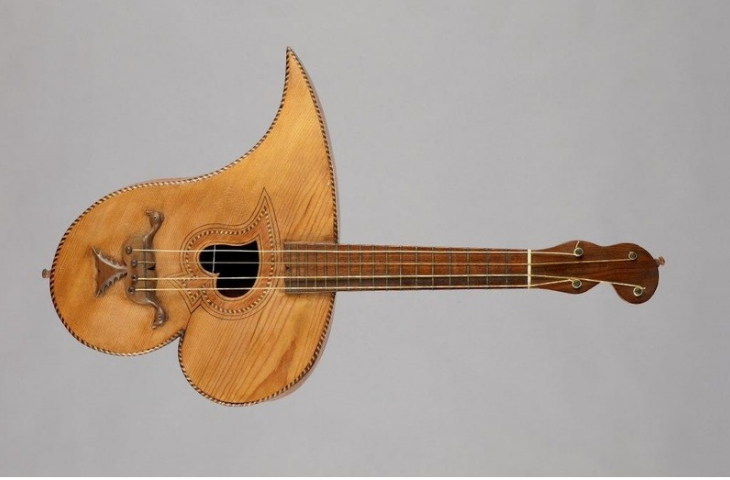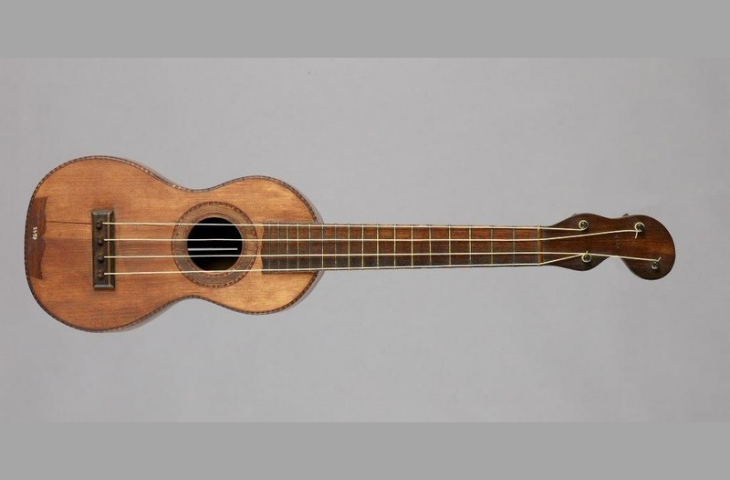February 2022
Fig.1

Braguinha, Augusto Da Costa, Funchal (Madeira), before 1898, inv. 2496
Fig.2

Braguinha, Augusto Da Costa, Funchal (Madeira), before 1898, inv. 2497
Fig.3

Braguinha, Augusto Da Costa, Funchal (Madeira), before 1898, inv. 2500
The machete from Madeira
The MIM has three plucked string instruments built in the 19th century in Funchal, a city on the island of Madeira. In the past, they were called machete, but today they are usually referred to as braguinha. In 1898, Victor-Charles Mahillon, the first curator of the Conservatory’s Instrumental Museum, acquired them from the luthier Augusto Da Costa.
The machete is usually shaped like a small guitar with four single strings, tuned D–G–B–D. However, Da Costa enjoyed creating instruments with unusual shapes, such as the fish-shaped braguinha with inventory number 2496, or number 2500, shaped like an inverted heart.
In the 19th century, the machete was played in various social settings, both among peasants and in upper-class circles. To strum chords, musicians used metal picks attached to their fingers.
The ukulele, a small Hawaiian guitar, is believed to have been derived from the machete. Migrants from Madeira introduced the instrument to Hawaii at the end of the 19th century.
Bibliography
- Rui Alves Trindade (1995). Instrumentos musicais populares madeirenses. In: Xarabanda: 8:3-23
- Manuel Morais (1997). Uma colecção de peças musicais do século XIX par: Machete e Guitarra. In: Xarabanda 11: 2-10
- John King (2005). A Few Words about the Madeiran "Machete". In: The Galpin Society Journal, 58: 83-88, 217-219